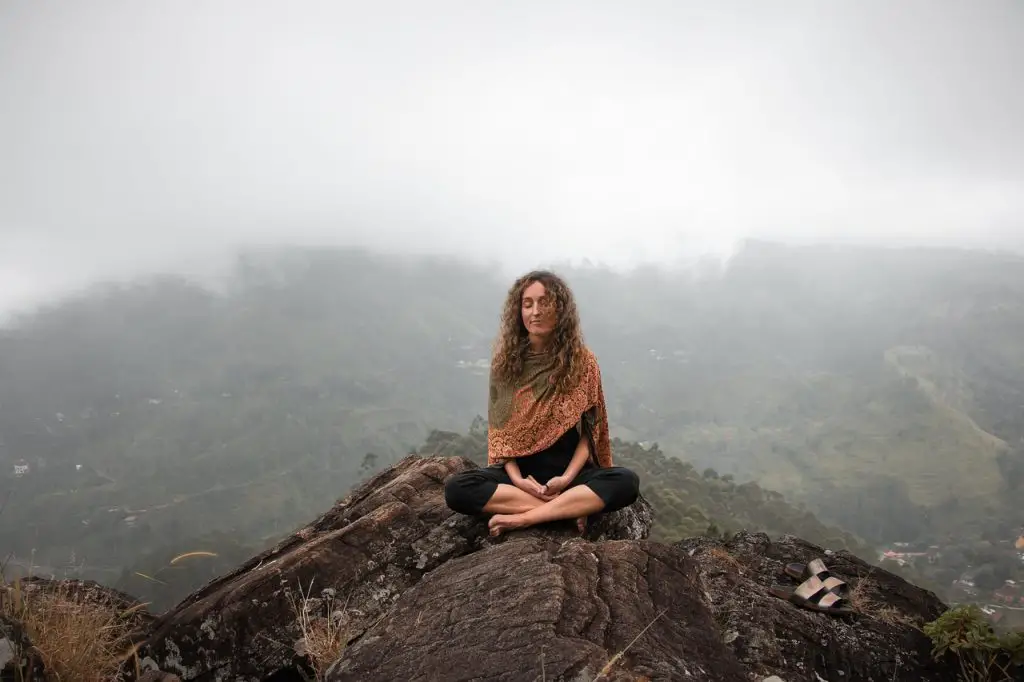In an increasingly fast-paced world filled with stress, pollution, and unhealthy lifestyles, the pursuit of wellness has become a priority for many individuals. Wellness tourism, a burgeoning sector of the travel industry, has gained significant traction in recent years. This transformative trend encourages travelers to prioritize their physical and mental well-being while exploring the world. In this article, we will delve into the concept of wellness tourism, its evolution, key components, benefits, and the impact it has on individuals and destinations alike.
I. What is Wellness Tourism?
Wellness tourism is a specialized form of travel that places an emphasis on enhancing and maintaining one’s well-being, both physically and mentally, during a trip. Unlike conventional vacations, where relaxation and sightseeing are often the primary goals, wellness tourism seeks to combine leisure and self-care in a holistic manner. It’s about rejuvenation, self-discovery, and fostering a harmonious balance between the mind, body, and soul.
The Global Wellness Institute defines wellness tourism as “travel associated with the pursuit of maintaining or enhancing one’s personal wellbeing.” This broad definition encompasses a wide range of experiences and activities, making it a versatile and inclusive concept. Wellness tourism isn’t limited to luxurious spa retreats; it can encompass everything from yoga retreats in Bali to meditation workshops in the Himalayas or even hiking expeditions in the Swiss Alps.
II. The Evolution of Wellness Tourism
The roots of wellness tourism can be traced back to ancient civilizations, where travelers sought rejuvenation in natural hot springs, spiritual retreats, and therapeutic environments. However, it wasn’t until the late 20th century that wellness tourism began to take shape as a distinct industry.
The Spa Movement: The 1970s marked the emergence of the spa movement in the United States and Europe. Spas became synonymous with relaxation and pampering, offering a range of treatments like massages, facials, and hydrotherapy. This era laid the foundation for wellness tourism’s future growth.
Holistic Health Retreats: In the 1980s and 1990s, holistic health retreats gained popularity. These retreats focused on a more comprehensive approach to well-being, combining physical fitness, nutrition, and mental health practices like meditation and mindfulness.
Wellness Resorts and Destinations: The 21st century saw the rise of wellness resorts and destinations worldwide. These venues offered not only spa treatments but also fitness programs, healthy cuisine, and various wellness activities to cater to the growing demand for holistic experiences.
III. Key Components of Wellness Tourism
Wellness tourism encompasses a diverse range of experiences, activities, and destinations. Here are some key components that define this evolving sector:
Spa and Wellness Retreats: These are dedicated wellness centers and resorts that offer a wide array of treatments and activities designed to relax and rejuvenate guests. They typically feature spa services, yoga and meditation sessions, healthy cuisine, and wellness workshops.
Fitness and Adventure Wellness: Wellness tourism extends beyond relaxation to include physical activities and adventure. Travelers can engage in hiking, biking, water sports, or even extreme sports in stunning natural settings.
Mindfulness and Mental Well-being: Mental wellness is a crucial aspect of the wellness tourism experience. Meditation retreats, stress management workshops, and mindfulness programs help travelers develop inner peace and emotional balance.
Healthy Eating and Nutrition: Wellness-oriented travelers seek destinations that offer farm-to-table dining experiences, organic cuisine, and cooking classes to learn how to prepare healthy meals.
Spiritual and Cultural Wellness: Many wellness tourists are drawn to destinations with a rich spiritual or cultural heritage. These travelers seek personal growth and enlightenment through activities such as yoga, meditation, and exploring ancient traditions.
Eco-Wellness: Sustainable and eco-friendly practices are increasingly important to wellness travelers. Eco-wellness destinations and eco-tours allow visitors to connect with nature while minimizing their environmental impact.
IV. Benefits of Wellness Tourism
The popularity of wellness tourism can be attributed to the numerous benefits it offers to travelers. Here are some of the key advantages:
Improved Physical Health: Wellness tourism encourages physical activity, healthy eating, and relaxation, leading to improved fitness levels and reduced stress.
Mental Well-being: Travelers can find peace and clarity through meditation, mindfulness, and other mental health practices, promoting emotional well-being.
Stress Reduction: Wellness vacations provide an opportunity to disconnect from the demands of daily life, reducing stress and promoting relaxation.
Personal Growth: Engaging in self-improvement activities and embracing new experiences can lead to personal growth and self-discovery.
Cultural and Spiritual Enrichment: Traveling to wellness destinations often involves immersing oneself in local culture and spirituality, fostering a deeper connection to the world.
Long-term Lifestyle Changes: Many wellness tourists return home with a renewed commitment to maintaining a healthier lifestyle, including improved diet and exercise habits.
V. The Impact of Wellness Tourism
Wellness tourism doesn’t just benefit the individual traveler; it also has a significant impact on destinations and communities.
Economic Boost: Wellness tourism can be a major source of income for local economies, as visitors spend on accommodations, food, activities, and wellness services.
Sustainable Practices: The wellness tourism industry often prioritizes sustainable and eco-friendly practices, which can have a positive environmental impact on destinations.
Cultural Preservation: By promoting local culture and traditions, wellness tourism can contribute to the preservation of cultural heritage.
Job Creation: Wellness tourism can create employment opportunities, particularly in areas that rely on tourism for economic growth.
Infrastructure Development: The demand for wellness tourism may drive improvements in infrastructure and services in destinations, benefiting both tourists and locals.
Wellness tourism is a dynamic and evolving sector that reflects the growing desire for health, relaxation, and personal development in today’s fast-paced world. This transformative form of travel allows individuals to prioritize their well-being while exploring diverse destinations and experiences. Whether it’s through spa retreats, physical activities, mindfulness practices, or cultural immersion, wellness tourism offers something for everyone. As this trend continues to gain momentum, it holds the promise of not only improving the lives of individual travelers but also positively impacting the communities and destinations that welcome them. So, whether you’re seeking a peaceful escape or a path to personal growth, wellness tourism offers a world of possibilities for your next journey.
VI. Emerging Trends in Wellness Tourism
As wellness tourism continues to evolve, several emerging trends are shaping the industry. These trends cater to the changing preferences and needs of travelers seeking transformative and enriching experiences.
Digital Detox Retreats: With the increasing prevalence of technology and screen time, many wellness tourists are seeking digital detox retreats. These retreats encourage guests to disconnect from their devices and reconnect with nature, themselves, and others.
Wellness Sabbaticals: Long-term wellness travel, often referred to as “wellness sabbaticals,” is gaining popularity. Travelers take extended breaks to focus on personal growth, health, and self-care, often for several weeks or even months.
Gen Z Wellness: Younger generations, particularly Gen Z, are driving new trends in wellness tourism. They prioritize sustainability, social responsibility, and unique experiences. As a result, destinations and businesses are adapting to cater to their values and preferences.
Wellness Tech: The integration of technology in wellness experiences is on the rise. From wearable fitness trackers to virtual reality meditation apps, travelers can harness technology to enhance their well-being during their journeys.
Medical Wellness Tourism: A growing number of travelers are seeking wellness experiences that are medically supervised and tailored to address specific health concerns. Medical wellness tourism combines traditional treatments with medical expertise to promote healing and recovery.
VII. Challenges and Considerations
While wellness tourism offers numerous benefits, it also faces several challenges and considerations:
Accessibility: Wellness tourism can be costly, making it inaccessible to many people. Addressing affordability and inclusivity is crucial for the industry’s long-term growth.
Authenticity: The demand for wellness experiences has led to a proliferation of wellness offerings, some of which may lack authenticity or fail to deliver the promised benefits. Travelers should carefully research and choose reputable providers.
Over-tourism: Popular wellness destinations can face the challenges of over-tourism, which can harm local ecosystems and cultures. Sustainable practices and responsible tourism are vital to mitigate these issues.
Cultural Sensitivity: When participating in wellness experiences in foreign cultures, travelers should be respectful and culturally sensitive, ensuring they do not appropriate or disrespect local traditions.
Health and Safety: Travelers should consider their own health and safety, especially when engaging in physical activities or trying new wellness treatments. Consulting with healthcare professionals before embarking on wellness journeys is advisable.
Environmental Impact: While many wellness tourism destinations emphasize sustainability, travelers can further reduce their environmental impact by choosing eco-friendly accommodations, minimizing waste, and supporting local conservation efforts.
A Journey to Health and Happiness
Wellness tourism represents a transformative shift in the way people approach travel. It is no longer solely about ticking off destinations from a bucket list but also about nurturing one’s physical and mental well-being. This evolving industry caters to a wide range of interests and preferences, ensuring that there is a wellness experience for everyone, whether you seek relaxation, adventure, cultural immersion, or personal growth.
As wellness tourism continues to grow and adapt to changing consumer demands, it offers the promise of not only enhancing individual lives but also positively impacting the destinations and communities that welcome wellness travelers. By prioritizing sustainability, authenticity, and inclusivity, wellness tourism can evolve into a force for good, promoting health, happiness, and cultural exchange on a global scale.
So, whether you are planning a week-long meditation retreat in the mountains or a month-long wellness sabbatical, wellness tourism invites you to embark on a journey to health and happiness, where you can rejuvenate your body, nourish your soul, and create lasting memories along the way.







